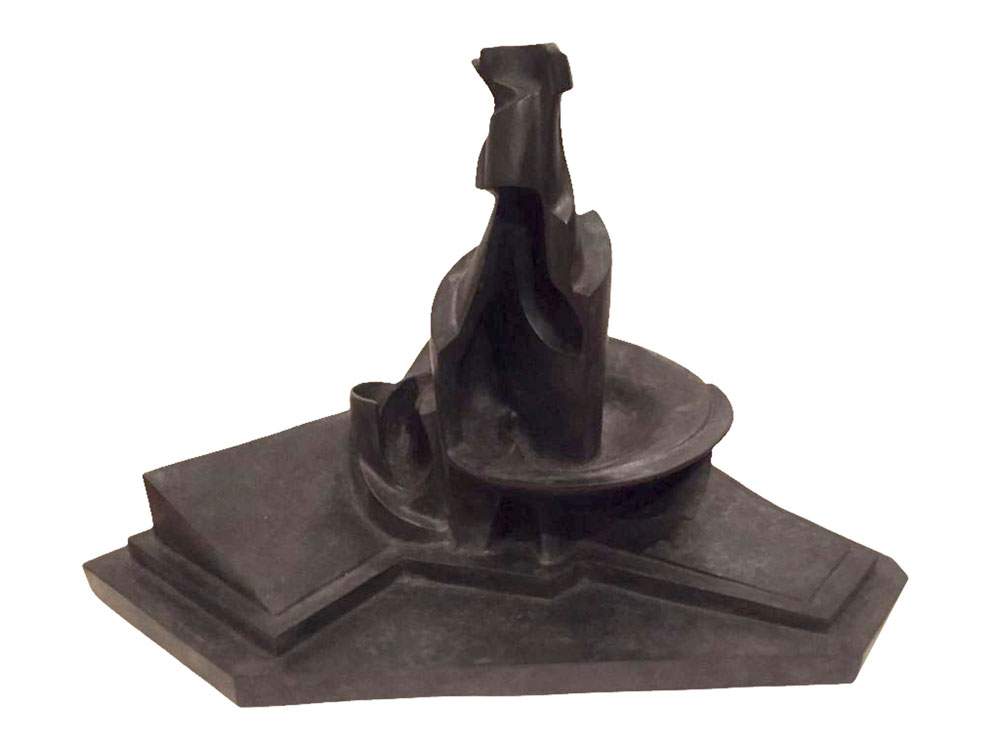The Archaeological Museum of Reggio Calabria offers a journey through the art of Boccioni
From February 8 to March 8, 2020, the National Archaeological Museum of Reggio Calabria will present the exhibition Umberto Boccioni. An Itinerary, curated by Marisa Cagliostro and Antonella Cucciniello.
On display will be five graphic works that originally belonged to the Winston Malbin private collection and later to the Roberto Bilotti Ruggi d’Aragona Collection and are now in storage at the National Gallery of Palazzo Arnone in Cosenza. These form a small corpus, hitherto unpublished from a critical and exhibition point of view, which pemits a broader view of Boccioni’s graphic career in the first decade of the 20th century.
In addition to these works, the bronze sculpture Development of a Bottle in Space, from 1912, from the Bilotti Collection, and the preparatory study for the painting The Rising City, made between 1910 and 1911 and now kept at the Museum of Modern Art in New York, will be on view: the work is considered Boccioni’s first Futurist work.
“We open with great pleasure this exhibition dedicated to Umberto Boccioni, the artist to whom the city of Reggio Calabria gave birth on October 19, 1882. In this way, the Museum starts a new path of enhancement aimed at contemporary art and its links with the deepest cultural roots of the Calabrian territory. With this project, the MArRC joins the network of places of contemporary art in Italy on the MiBACT platform dedicated, precisely, to the project ”Places of the Contemporary,“ promoted by the General Directorate for Contemporary Creativity and Urban Regeneration. Valuable cameo in this exhibition is Development of a Bottle in Space, a bronze copy of a plaster model made by the artist in 1912, also belonging to the Bilotti collection. It is a swirling example of still life, a very rare theme in Boccioni’s Futurist poetics and therefore significant in the exhibition itinerary,” said museum director Carmelo Malacrino.
“After more than 15 years since the last exhibition occasion, a new tribute to Umberto Boccioni is presented in the city that, by a fortunate contingency due to his father’s travels for work, gave him birth to parents from Romagna. The occasion is offered to young students and scholars and to all visitors to our great Museum, so that they can enjoy small excerpts of his original work, to better understand its importance in contemporary art historiography and his personal contribution to the rise and formation of the Futurist Movement, alongside its major exponents, signers of Marinetti’s first Manifesto in 1909, with Balla, Severini, Russolo and other contemporaries and proselytes. We hope that this exhibition proposal of ours will be useful not only to bring back to memory one of the world’s most prominent personalities of contemporary art, who brought the name of Reggio Calabria to the world’s major museums, but also to heal the ”forgetfulness“ of commemorating, in 2016, the Centenary of Boccioni’s death. We would like this exhibition to mark the beginning of a renewed interest in the history of the city of Reggio in those years and the national role of the group of Reggio futurists,” added curator Cagliostro.
During the exhibition, the 1979 documentary Sulle tracce del futurismo (On the Trails of Futurism) from the Carlo Erba archive, from an idea by Marco Rossi Lecce in collaboration with Enrico Crispolti, which explains the events of sculpture and Umberto Boccioni, will be screened. A Collection of Drawings and Engravings, a video production of the Municipality of Rende (CS), curated and made available by Tonino Sicoli.
For info: www.museoarcheologicoreggiocalabria.it
Pictured, Development of a Bottle in Space (1912; bronze, Bilotti Collection)
 |
| The Archaeological Museum of Reggio Calabria offers a journey through the art of Boccioni |
Warning: the translation into English of the original Italian article was created using automatic tools. We undertake to review all articles, but we do not guarantee the total absence of inaccuracies in the translation due to the program. You can find the original by clicking on the ITA button. If you find any mistake,please contact us.




























